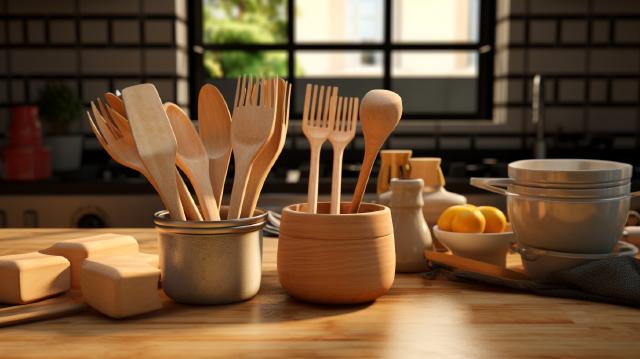
The Versatile Spatula: Your Kitchen’s Best Friend
In the bustling world of the kitchen, there’s one tool that stands out as a true multitasker—the spatula. Whether you’re a seasoned chef or just starting your culinary journey, a good spatula is an indispensable companion that plays a crucial role in various cooking tasks.
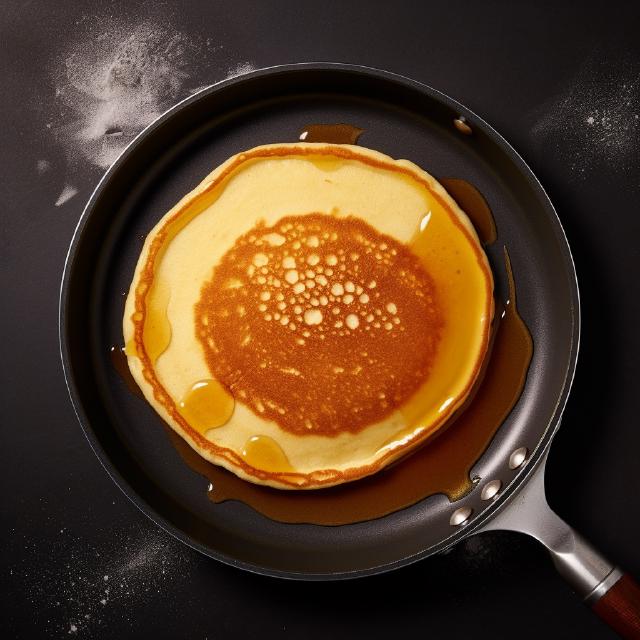
Flipping and Turning
One of the most common uses of a spatula is flipping and turning food items. From pancakes sizzling on the griddle to delicate fish fillets in the pan, spatulas excel at gently lifting and flipping items without breaking them apart. Their flat, broad heads provide the perfect surface for ensuring an even cook and a beautiful presentation.
Scaping and Stirring
Spatulas are fantastic at scraping every last bit of sauce, batter, or dough from bowls, pots, and pans. They come to the rescue when you’re making sauces, soups, or baking, ensuring that no delicious morsel goes to waste. In addition to scraping, spatulas can be used for gentle stirring, especially when you want to fold ingredients together with precision.
Icing and Decorating
If you have a sweet tooth or love baking, spatulas become your artistic tool. They are the go-to utensils for icing cakes, spreading frosting evenly, and creating beautiful designs. The flat and flexible nature of spatulas allows you to achieve a professional finish on your baked goods.
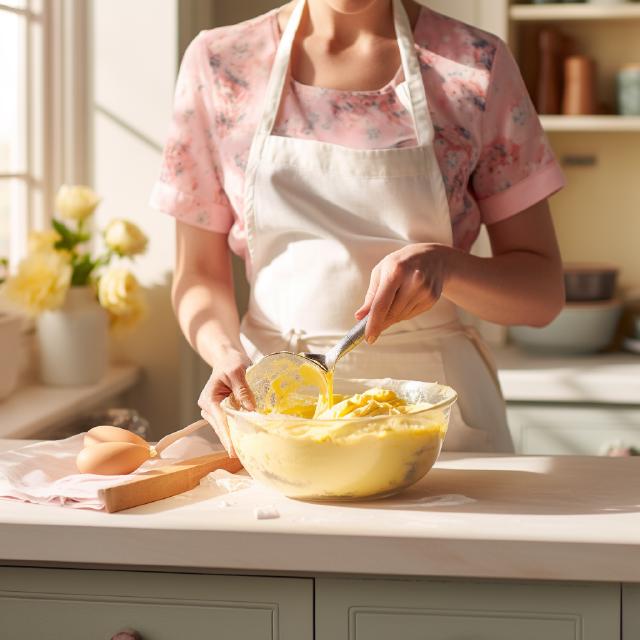
Mixing and Folding
Spatulas are also essential when it comes to mixing and folding ingredients. Whether you’re making a fluffy omelet, a light and airy cake batter, or gently incorporating ingredients into a salad, spatulas provide the control you need to achieve the desired texture and consistency.
Non-Stick Cookware’s Best Friend
In the age of non-stick cookware, spatulas shine even brighter. Their gentle touch ensures that your non-stick pans remain in excellent condition, as they won’t scratch or damage the surface. This makes them a must-have tool for anyone who loves the convenience of non-stick cooking.
Let us explore the different materials for spatulas a little bit closer now.
Silicone Spatulas: The Flexible Workhorses
When it comes to versatile kitchen tools, silicone spatulas take center stage. These kitchen workhorses are renowned for their flexibility, durability, and ability to handle a wide range of culinary tasks.
Heat Resistance
Silicone spatulas are designed to withstand high temperatures, making them perfect for tasks that involve cooking over stovetops or baking in hot ovens. Unlike some other materials that can warp or melt when exposed to heat, silicone spatulas remain stable and won’t release harmful chemicals into your food.
Non-Stick Properties
One of the standout features of silicone spatulas is their non-stick properties. Whether you’re flipping pancakes, sautéing vegetables, or stirring a sticky caramel sauce, silicone spatulas glide effortlessly without causing damage to your cookware. This non-stick nature also simplifies cleanup, as food residue tends to slide right off.
Gentle on Delicate Surfaces
Silicone spatulas are known for their gentleness, making them ideal for delicate surfaces like non-stick pans and fragile baked goods. You can confidently use them without worrying about scratching or damaging your cookware, ensuring the longevity of your kitchen equipment.
Versatile Shapes
Silicone spatulas come in a variety of shapes and sizes, each tailored to specific kitchen tasks. From slim, flat spatulas for flipping crepes to larger, curved ones for folding in ingredients, there’s a silicone spatula for every purpose.
Easy to Clean and Maintain
Cleaning silicone spatulas is a breeze. Their smooth, non-porous surface doesn’t trap food particles, and they are dishwasher-safe. You can also easily wipe them clean by hand after use, ensuring they’re always ready for the next cooking adventure.
Silicone spatulas are the unsung heroes of the kitchen, combining heat resistance, non-stick properties, and a gentle touch to handle a wide range of cooking tasks. With their versatility and durability, these flexible workhorses are a must-have for any home chef.
Metal Spatulas: Precision and Durability
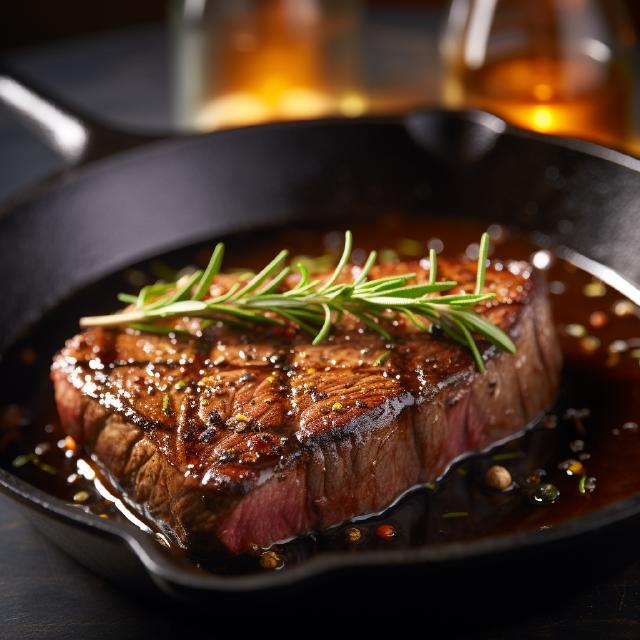
Precision Flipping and Turning
Metal spatulas excel at precise control when flipping and turning delicate foods. Whether you’re searing a fillet of fish, flipping a perfectly fried egg, or executing a flawless pancake flip, a metal spatula’s thin, flat edge allows you to navigate under food items with surgical precision. This finesse ensures that your creations remain intact and visually appealing.
Durability Beyond Compare
When it comes to durability, metal spatulas are in a league of their own. Constructed from materials like stainless steel, these spatulas are built to last. They can withstand high temperatures, resist bending, and endure heavy use without showing signs of wear and tear. A quality metal spatula becomes an enduring companion in your kitchen, providing consistent performance for years.
Ideal for High-Heat Cooking
Metal spatulas are particularly well-suited for high-heat cooking methods such as searing, grilling, and sautéing. Their ability to endure intense heat without warping or melting makes them invaluable for achieving that perfect sear or grill marks on proteins and vegetables.
Versatile Shapes and Sizes
Metal spatulas come in various shapes and sizes, each tailored to specific culinary tasks. Whether you need a long, thin spatula for flipping delicate items or a wider one for lifting and transferring, there’s a metal spatula to suit your needs.
Easy Cleaning
Cleaning a metal spatula is a breeze. Its smooth, non-porous surface doesn’t trap food residue, and it can be easily washed by hand or in the dishwasher.
Metal spatulas are the go-to choice when precision and durability are paramount. With their thin edges and resilience, they empower chefs to conquer demanding culinary feats while standing the test of time in the kitchen.
Plastic Spatulas: Lightweight and Affordable
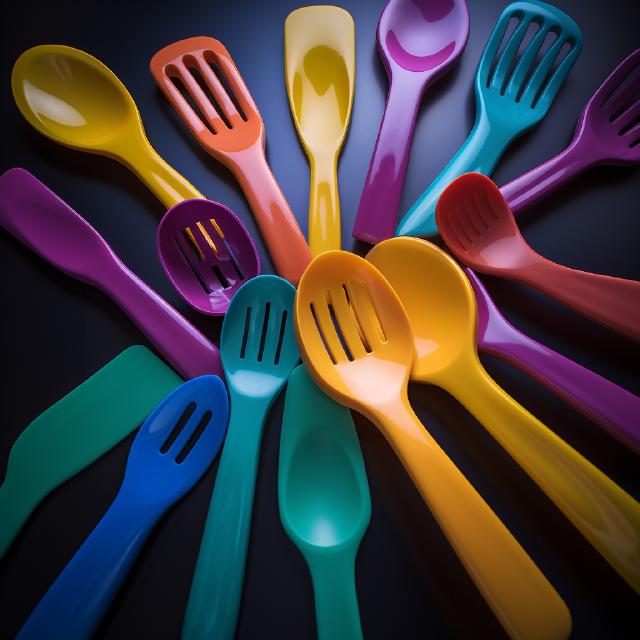
Featherlight and Easy to Handle
One of the standout features of plastic spatulas is their featherlight design. The lightweight construction makes them incredibly easy to handle, making them ideal for tasks that require precision and finesse. Whether you’re delicately flipping fish fillets or gently folding whipped egg whites into a batter, plastic spatulas provide excellent control.
Budget-Friendly Kitchen Tools
Plastic spatulas are often among the most affordable options in the kitchen utensil aisle. Their cost-effectiveness makes them accessible to cooks of all levels, from beginners to seasoned chefs, allowing you to stock your kitchen with essential tools without breaking the bank.
Versatility in Shapes and Sizes
Plastic spatulas come in a variety of shapes and sizes, catering to a wide range of culinary needs. Whether you need a narrow, angled spatula for scraping out the last remnants of cake batter from a mixing bowl or a wider, flat spatula for flipping pancakes, you’ll find a plastic spatula that suits your requirements.
Easy Maintenance
Maintaining plastic spatulas is a breeze. Their smooth surfaces are non-porous, which means they are less likely to trap food particles or stains. You can simply rinse them off or toss them in the dishwasher for quick and hassle-free cleanup.
Kid-Friendly Cooking
Plastic spatulas are also an excellent choice for involving kids in the kitchen. Their lightweight and easy-to-handle nature makes them perfect for young aspiring chefs to get hands-on experience while staying safe.
In summary, plastic spatulas are the lightweight champions of the kitchen, offering affordability and versatility that makes them a valuable addition to any kitchen, whether you’re just starting your culinary journey or looking for a practical and economical tool.
Nylon Spatulas: Combining the Best of Both Worlds
Nylon spatulas occupy a unique position in the realm of kitchen utensils, offering a remarkable fusion of the advantages of both plastic and silicone spatulas. These versatile kitchen companions have gained popularity for their ability to seamlessly blend the best of both worlds, making them indispensable tools in a cook’s arsenal.
The Hybrid Material
Nylon spatulas are crafted from a special type of plastic that combines the durability and heat resistance of traditional plastic spatulas with the flexibility and non-stick properties of silicone ones. This hybrid material results in spatulas that can handle a wide range of culinary tasks with finesse.
Versatility in Action
Nylon spatulas shine in various kitchen scenarios. Here are a few where they truly excel:
Stirring Sauces: When you’re stirring a simmering sauce on the stovetop, a nylon spatula’s heat resistance ensures it won’t warp or melt, and its flexibility allows you to reach every corner of the pan for even mixing.
Scraping Mixing Bowls: Nylon spatulas are adept at scraping every last bit of batter or dough from mixing bowls, ensuring no precious ingredient goes to waste.
Sautéing and Stir-Frying: Nylon spatulas provide the precision needed to toss and stir-fry ingredients in a hot pan, all while being gentle enough to preserve the integrity of delicate foods.
Non-Stick Cookware: Their non-abrasive nature makes nylon spatulas ideal for use with non-stick cookware, safeguarding your pans from scratches and maintaining their longevity.
Easy Maintenance
Nylon spatulas are easy to clean and maintain. Their smooth surfaces resist staining and are non-porous, preventing the absorption of odors or flavors. Whether you wash them by hand or toss them in the dishwasher, cleaning is a breeze.
In summary, nylon spatulas have found their place in the hearts of home cooks and professional chefs alike, thanks to their ability to harmoniously merge the advantages of plastic and silicone. These versatile kitchen tools are up to the task in a wide array of cooking scenarios, making them valuable additions to any kitchen.
Bamboo Spatulas: Eco-Friendly Cooking
Sustainability at Its Core
Bamboo is a highly sustainable material. It’s one of the fastest-growing plants on Earth, known for its rapid regeneration. Unlike traditional hardwoods, harvesting bamboo doesn’t require clear-cutting or the use of harmful chemicals. This makes bamboo spatulas an eco-conscious choice, reducing your kitchen’s carbon footprint.
Natural Strength and Durability
Bamboo is surprisingly strong and durable, capable of withstanding the rigors of daily cooking. Bamboo spatulas won’t easily splinter or crack, and they resist heat and moisture exceptionally well. This durability ensures they endure the demands of a bustling kitchen for years to come.
Versatile Design
Bamboo spatulas come in various shapes and sizes, each tailored to specific cooking tasks. The flat, wide design of some bamboo spatulas is perfect for flipping pancakes or sautéing vegetables, while the more delicate, slender options excel in tasks like stirring sauces or serving delicate desserts.
Gentle on Cookware
Bamboo spatulas are gentle on your cookware, making them an excellent choice for non-stick pans and delicate surfaces. They won’t scratch or damage your pots and pans, ensuring your kitchen equipment’s longevity.
Aesthetic Appeal
Beyond their functionality, bamboo spatulas add a touch of natural elegance to your kitchen. The warm, earthy tones of bamboo complement a wide range of kitchen aesthetics, from rustic to modern.
In conclusion, bamboo spatulas embody eco-friendly cooking without compromising on performance or aesthetics. Their sustainable origins, natural strength, and versatility make them valuable additions to any kitchen. When you choose bamboo spatulas, you not only elevate your culinary experience but also contribute to a more sustainable and greener future.
Choosing the Right Material for the Job
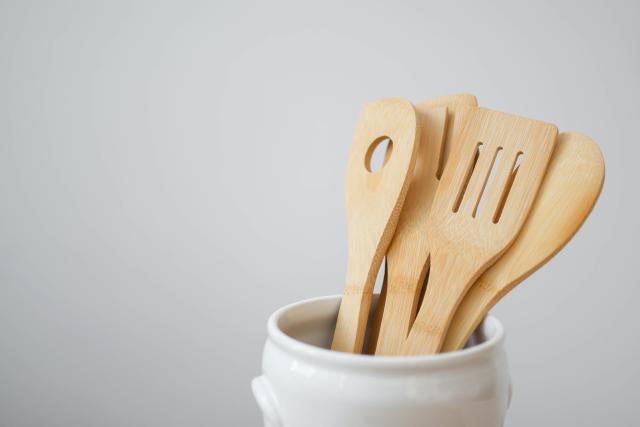
When it comes to selecting the perfect spatula for your culinary adventures, the choice of material plays a crucial role. Each material offers a unique set of strengths and weaknesses, making it important to match the spatula to the specific cooking task at hand. Below is a comparative table summarizing the characteristics of various spatula materials:
| Material | Strengths | Weaknesses |
|---|---|---|
| Silicone | Heat resistance, non-stick properties | Limited precision for delicate tasks |
| Metal | Precision, durability, high-heat resistance | Potential to scratch cookware |
| Wood | Natural aesthetic, gentle on cookware | Requires special care and maintenance |
| Plastic | Lightweight, affordable, non-abrasive | Limited heat resistance, durability issues |
| Nylon | Heat resistance, non-stick, versatility | May not be as durable as some other options |
| Bamboo | Eco-friendly, durable, gentle on cookware | Limited precision for intricate tasks |
Practical Tips for Selecting the Right Spatula Material
Consider Your Cooking Style: If you often cook with high heat, metal spatulas are an excellent choice. For delicate tasks, consider silicone or nylon spatulas, which offer greater flexibility.
Non-Stick Cookware: If you primarily use non-stick cookware, opt for materials like silicone, plastic, or bamboo to protect your pans from scratches.
Maintenance Preferences: Consider the amount of maintenance you’re willing to put into your spatulas. Wooden spatulas require more care and seasoning, while silicone and plastic are low-maintenance.
Eco-Friendly Concerns: If sustainability is a priority, bamboo or other eco-friendly materials might be the best choice for your kitchen.
Budget: Determine your budget for kitchen utensils. Plastic spatulas are typically more affordable, while high-quality metal or bamboo spatulas may come at a higher cost.
By considering these factors and referring to the comparative table above, you can make an informed decision and select the right spatula material that perfectly suits your cooking needs and preferences.
Dishwasher-Safe Spatulas: Easy Cleanup for Busy Cooks
When it comes to kitchen utensils, the convenience of dishwasher-safe options can’t be overstated. Fortunately, many types of spatulas are designed to withstand dishwasher cleaning, making your post-cooking cleanup a breeze. Here’s a breakdown of spatula materials that are typically dishwasher safe:
Silicone Spatulas
Silicone spatulas are renowned for their dishwasher-friendly nature. Their non-porous surface doesn’t trap food particles, making them easy to clean. Before placing silicone spatulas in the dishwasher, check the manufacturer’s recommendations to ensure they are safe for high-heat and high-pressure wash cycles.
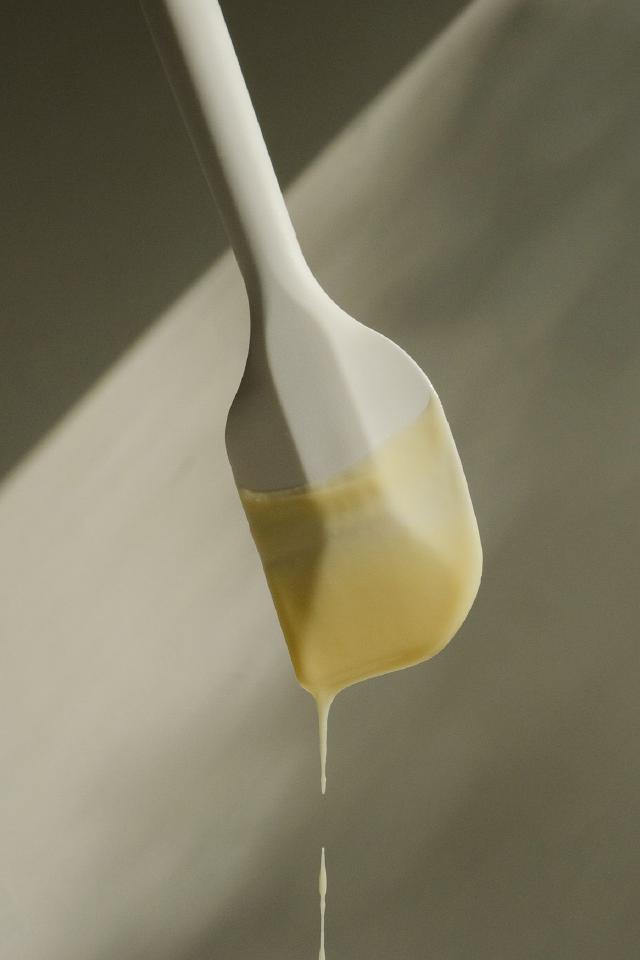
Plastic Spatulas
Most plastic spatulas are dishwasher safe, making them a practical choice for hassle-free cleanup. The smooth, non-porous surface of plastic spatulas prevents food residue from adhering, simplifying the cleaning process.
Nylon Spatulas
Nylon spatulas, like their plastic counterparts, are usually safe to toss in the dishwasher. Their heat resistance and non-stick properties ensure that they can handle the dishwasher’s cleaning cycle without issues.
Bamboo Spatulas
While bamboo spatulas are naturally durable, it’s essential to exercise caution when cleaning them in the dishwasher. High-heat and prolonged exposure to water can lead to warping or cracking. To preserve their longevity, it’s often recommended to hand-wash bamboo spatulas with mild soap and warm water.
Metal Spatulas
Most metal spatulas are dishwasher safe, given their durability and resistance to high temperatures. However, it’s advisable to check for any manufacturer-specific guidelines, especially if the spatula has wooden or plastic handles, which may not fare as well in the dishwasher.
Wooden Spatulas
Wooden spatulas require special care and are not typically dishwasher safe. The high heat and moisture in dishwashers can cause wooden spatulas to crack, warp, or lose their finish. Hand washing with mild soap and prompt drying is the best way to maintain wooden spatulas.
In summary, silicone, plastic, nylon, and most metal spatulas are safe to clean in the dishwasher, simplifying cleanup after your culinary adventures. However, always refer to the manufacturer’s guidelines for specific care instructions to ensure the longevity of your spatulas.
Best Spatula for Non-Stick Pans
When it comes to non-stick pans, choosing the right spatula is crucial to protect the pan’s surface and maintain its longevity. The best spatula for non-stick pans is undoubtedly one made of silicone.
Silicone Spatulas
Why Silicone Spatulas?
Gentle on Surfaces: Silicone spatulas have a soft, flexible edge that is gentle on non-stick coatings. They won’t scratch or damage the delicate surface of your pan, ensuring it remains in pristine condition.
Non-Stick Properties: Silicone is inherently non-stick, which means it effortlessly glides over the surface of your non-stick pan. This reduces the risk of food sticking and makes flipping and serving a breeze.
Heat Resistance: Silicone spatulas can withstand high temperatures, so you can confidently use them for all your cooking needs, from flipping pancakes to sautéing vegetables.
Easy to Clean: The smooth, non-porous surface of silicone spatulas makes them easy to clean. They won’t trap food particles, ensuring a quick and thorough cleanup.
By choosing a silicone spatula for your non-stick pans, you not only protect your cookware but also enjoy the convenience of a versatile and kitchen-friendly tool. It’s a win-win for your cooking experience!
Can a Spatula Replace a Whisk?
Mixing Batters: Spatulas, especially those with flat, flexible heads, can be used to gently mix cake batters, pancake batter, or muffin mixtures. Their broad surface allows you to fold ingredients together effectively.
Stirring Ingredients: For liquid mixtures, such as soups, sauces, or custards, a spatula can help evenly combine ingredients. The spatula’s flat edge can scrape the bottom of the pot, preventing sticking or burning.
In a Pinch: If you find yourself without a whisk and need to quickly beat eggs or whip cream, a spatula can be used with a back-and-forth motion to introduce some air and achieve light frothiness.
Limitations
While a spatula can work in a pinch, it’s important to note that it doesn’t provide the same efficiency or aeration as a whisk. Whisks have a design specifically tailored for incorporating air into mixtures, making them superior for tasks like whipping egg whites to stiff peaks or creating exceptionally smooth sauces and gravies.
In summary, while a spatula can serve as a makeshift whisk for certain tasks, it cannot fully replace the effectiveness of a dedicated whisk when it comes to achieving optimal texture, volume, and consistency in recipes that require thorough mixing and aeration.
Conclusion: Navigating the World of Spatulas
In this comprehensive exploration of spatulas, we’ve embarked on a journey through the versatile world of kitchen utensils. From silicone to metal, plastic to bamboo, and their various applications, we’ve unveiled the remarkable qualities that make spatulas essential tools in any cook’s arsenal.
We began by delving into the different types of spatulas, each with its own unique strengths. Silicone spatulas, the flexible workhorses, bring heat resistance and non-stick properties to the table. Metal spatulas, with their precision and durability, excel